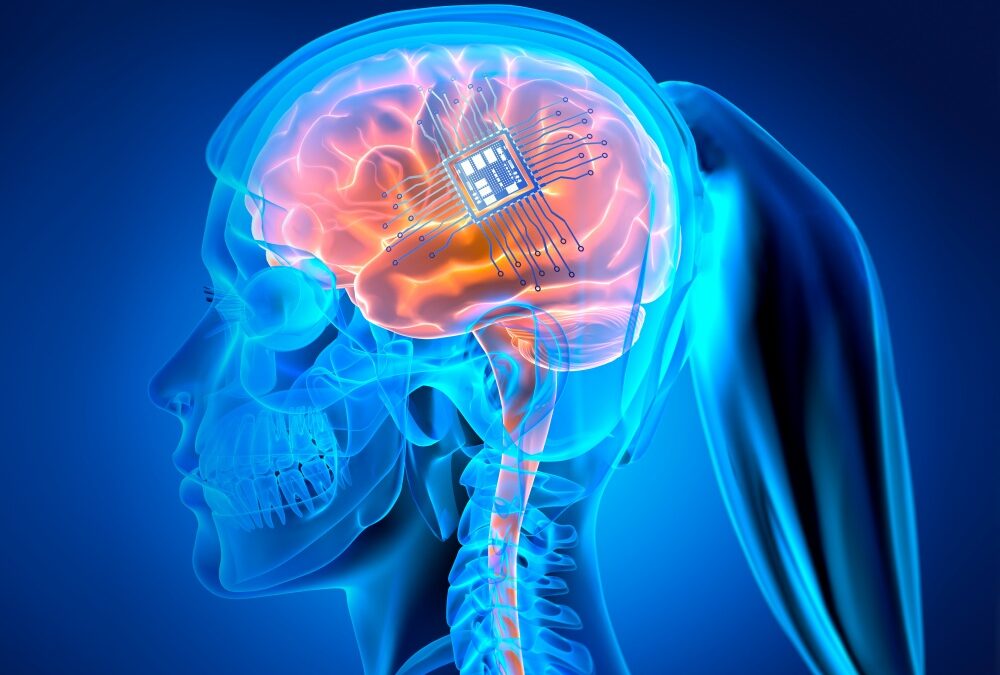Neuroplasticity, Neurogenesis, and synaptic plasticity and Stroke Recovery
The neural processes involved in functional recovery after a stroke, is reliant upon two mechanisms, neurogenesis and neuroplasticity.
Neurogenesis is the process of creating new neurons. This of course would be beneficial in the case of a stroke where neurons have been damaged/destroyed.
Neuroplasticity is the brains ability to adapt in response to new experiences. This is something that occurs throughout life.
Synaptic plasticity is a form of neuroplasticity that involves a change in the electrical signal between two neurons. The “synapse” is the space between two neurons and “plasticity” is the capacity for something to be moldable/changed. Hence, synaptic plasticity. The way that an electrical signal is transmitted is via chemicals called neurotransmitters.
Simplified, a neurotransmitter can either turn an adjoining neuron on (excitatory neurotransmitter) or off (inhibitory neurotransmitter). Synaptic plasticity involves several mechanisms whereby there is a change in the concentration of a neurotransmitters and/or a neurons ability to respond. When it comes to memory and/or learning a motor skill that we want to be able to repeat in the future, the brain rely’s on a mechanism called long-term potentiation (LTP).
LTP is a long lasting strengthening of a signal between to neurons that persists in response to a specific activity. If a neuron is repeatedly stimulated (repetitive practice of an activity), it will build more neurotransmitter receptors, and increase the amount of the neurotransmitter. Together, these two process will increase signal strength in that specific neural network.
What is BDNF and how does it work?
A growing body of evidence indicates that Brain-derived neurotrophic factor (BDNF) is a key player in multiple nerve communication processes. Simplified, BDNF is a molecule that triggers a cascade of actions on a neuron including neurogenesis (neuron growth), and synaptic plasticity (signal strength).
BDNF contributes to neurogenesis (growth of new neurons)
The current understanding is that BDNF binds to the TrKB receptor, triggering the neuron to grow more dendrites. Dendrites are the arms of a neuron that accept the neurotransmitters. More dendrites mean a stronger signal can be received from an adjoining neuron. Of note, current literature suggests this BDNF effect on a neuron is limited to specific brain areas. One area that has been identified is the hippocampus (brain area involved in memory and learning).
BDNF contributes to synaptic plasticity
Again, just to review, synaptic plasticity is the amount of signal strength between two neurons involving the release of a neurotransmitter to send the message. It is believed that BDNF regulates neurotransmitter release. In particular nitric oxide (NO), glutamate (excitatory neurotransmitter) and GABA (inhibitory neurotransmitter); and their receptors. In other words, BDNF might be one key that unlocks the door that allows the neurotransmitter to leave one neuron and the same key that opens the door of an adjoining neuron to allow that neurotransmitter to enter.
It is also believed that BDNF influences long-term potentiation (longer-lasting effects of signal strength). This process might be the result of BDNF influence on gene expression and/or protein synthesis.
Does BDNF Influence Stroke Recovery?
There is a growing body of evidence that suggests that BDNF can act as a repair agent after a stroke. However, the amount of BDNF (after a stroke) does not seem to be enough to overcome the cascade of events that are triggered by ischemia (lack of oxygen in the neuron). Therefore, pharmacologic and rehabilitation strategies have been identified as necessary interventions to increase the amount the BDNF expression. And in this area, there lies some potential opportunities to increase BDNF expression and functional recovery after a stroke.
Pharmacologic Interventions
The majority of the evidence suggests that BDNF can’t cross the blood-brain barrier (the filter that protects the brain). With that said, there does not currently seem to be a mechanism to get BDNF into the brain. Of note, there are ongoing studies that are investigating alternative means. One such study is working on creating a smaller molecule that can cross the blood-brain barrier. Other studies are investigating the potential of injecting a BDNF isoform directly into the damaged area of the brain. However, these studies have not yet proven to be effective.
Aerobic Exercise Increases BDNF expression
Multiple studies have shown a positive correlation between aerobic exercise, cognition, memory and BDNF expression in healthy people. Futhermore, there is considerable literature that increased BDNF expression improves learning, memory, and motor function in many disease processes, including stroke.
How much exercise is necessary to increase BDNF?
The consensus in the literature suggests 30 min of moderate intensity (heart rate goes up but you can still maintain a conversation), 4 days/week.
Aerobic exercise timing
There does appear to be an optimal time at which to perform your aerobic exercise. It is well documented that BDNF levels increase immediately following aerobic exercise. With that said, there are some who theorize that performing aerobic training prior to a cognitive/learning activity might prime the system to optimize synaptic plasticity.
Other articles you might like:
Benefits of Olive Oil and How To Use It in the Kitchen
Olive oil consumption is steadily increasing, and it’s easy to see why. It’s rich in antioxidants and omega-3s that keep your body in peak health. The oil is particularly beneficial in its least processed form: cold pressed extra virgin olive oil. The widespread...
Drink Your Way To Good Health With BEAM’s Super Greens
Finding it hard to meet your body’s nutritional needs? You’re not alone. According to the Dietary Reference Intakes, a staggering 92% of Americans suffer from at least one vitamin or mineral deficiency. Deficiencies for most nutrition indicators could be as high as...
You might be beyond help…
"If you're not willing to learn, no one can help you. If you're determined to learn, no one can stop you." - Zig Ziglar Spoiler alert, you and I don't have it all figured out. Yup. As much as I hate to admit it, there are things I don't know. And if I am being really...
Einstein was correct…..
“There are only two ways to live your life. One is as though nothing is a miracle. The other is as though everything is a miracle.”― Albert Einstein If you are reading this, congratulations. This means you have eyes that can read, and a brain that has the ability to...
5 Grounding Mats for Health Enthusiasts
A growing body of research is showing that grounding—the act of allowing the feet to come into direct contact with the Earth—offers health benefits. For those of us who are pressed for time, live in concrete jungles, and find it difficult to visit natural...
Grounding Mats: A Groundbreaking Way To Embrace Good Health
If you’ve ever walked barefoot on the earth, you might have felt recharged and reinvigorated. This sensation isn’t a mere coincidence. Instead, the positive effects we feel when we let our feet touch the Earth’s natural surface—an activity called grounding or...
Truth V Useful
"The more in harmony with yourself you are, the more joyful you are and the more faithful you are. Faith is not to disconnect you from reality - it connects you to reality". Paulo Coelho Faith is believing in something you can’t see. Of course, this is true for those...
What Can Blue Zone Residents Teach Us About Life, Health, and Longevity?
Today, we have more scientists, doctors, and nurses. There are also larger investments in healthcare and wellness, more experimental treatments, and more research papers than ever. And yet our world remains riddled with disease and health conditions. Consider that in...
Start Today……
Don't be afraid to give your best to what seemingly are small jobs. Every time you conquer one it makes you that much stronger. If you do the little jobs well, the big ones will tend to take care of themselves. - Dale Carnegie “Thanks, but what else can I do”. Yes,...
The Miracle of Faith: How It Can Help You Live Longer
“Religion” gets criticized and mocked, but nobody (not even science) can deny it can be good for you. For starters, a study of more than 1,500 newspaper obituaries from across the U.S. shows it can help you live 9.45 years longer than non-spiritual folks. But this...











